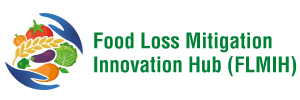
Project Description
Partially burnt rice hull is a rich source of Silicon which enhances plant growth in nutrient-less soil and overall plant health and Productivity. Hence main objectives of this study are to recommend an optimum dosage of partially burnt rice hull application for tomato plants; to distinguish quality improvement by the application; and to distinguish postharvest quality and shelf life of the treated fruits with other handling practices
Key Findings
After 14 days of storage at room temperature conditions, Treatment R2;
• Significantly lower weight loss and Comparatively higher peel firmness
After 14 days of storage at refrigerated conditions, Si treated tomatoes;
• Significantly lower weight loss and Comparatively higher peel firmness
• Cold storage – Quality is higher than ambient temperature conditions
• Cold storage – Quality is higher than ambient temperature conditions
Policy Implications
- Best Si treatment → R2
- Higher peel firmness
- Longer shelf life
- Higher keeping quality in storage (Lower weight loss and high peel firmness)
- Resistant to the adverse conditions during transportation and postharvest handling
- Additional cost for a farmer for growing tomatoes 50m2 land area by applying PBRH is around LKR 1,200
- Si treatment;
- Increase the marketability compared to non- Si treated tomatoes
- Delays the ripening of tomatoes – ideal for postharvest handling and improve the visual quality too
- Si helps strengthen fruit cell walls and improves the outer cuticle thickness of the fruits – Increase the peel firmness
- Helps to Retain firmness after 14 days of ambient and cold storage and have a longer shelf-life → Suitable for exports
- Reduce the postharvest losses and cost effective
Publication
Weerahewa, D., Liyanage, J. and Rajapakse, S. (2024). “Food For the Future: Putting an old-fashioned ingredient in Rice Husks – silicon – to produce high quality tomatoes. FLM Briefing No. 6. ACIAR Food Loss Mitigation Project. Institute of Policy Studies of Sri Lanka. Colombo.
